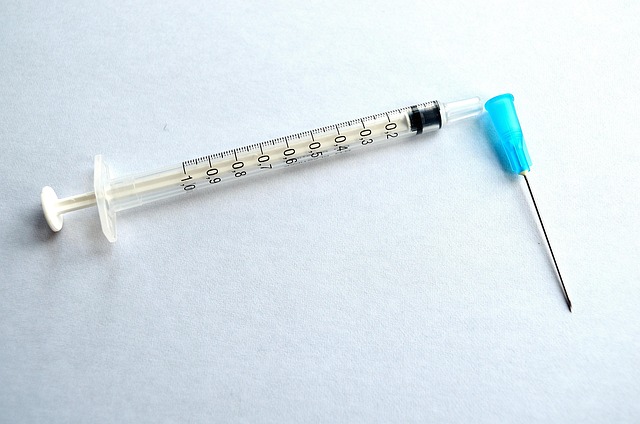Sleep is a cornerstone of health, playing a critical role in physical recovery, cognitive function, emotional regulation, and overall well-being. Yet, millions of people worldwide struggle with sleep disorders that disrupt this vital process. While sleep disorders affect both men and women, their prevalence, symptoms, and health consequences often differ based on biological, hormonal, and social factors. Understanding these differences is key to addressing sleep issues effectively and mitigating their impact on long-term health. In this article, we’ll explore how sleep disorders uniquely affect men and women, the underlying causes, and strategies for managing them.
What Are Sleep Disorders?
Sleep disorders encompass a range of conditions that interfere with the ability to fall asleep, stay asleep, or achieve restorative rest. Common examples include:
- Insomnia: Difficulty falling or staying asleep.
- Sleep Apnea: Interrupted breathing during sleep, leading to fragmented rest.
- Restless Legs Syndrome (RLS): Uncomfortable sensations in the legs that disrupt sleep.
- Narcolepsy: Excessive daytime sleepiness and sudden sleep attacks.
- Circadian Rhythm Disorders: Misalignment between the body’s internal clock and external schedules.
While these disorders can affect anyone, research shows that men and women experience them differently, with distinct implications for their health.
How Sleep Disorders Impact Men’s Health
1. Obstructive Sleep Apnea (OSA)
Men are significantly more likely to develop OSA, a condition characterized by repeated pauses in breathing during sleep. This disorder is linked to:
- Cardiovascular Risks: OSA increases the likelihood of hypertension, heart disease, and stroke due to oxygen deprivation and stress on the cardiovascular system.
- Daytime Fatigue: Chronic sleep disruption impairs concentration, decision-making, and reaction times, raising the risk of accidents, especially in high-stakes environments like driving or operating machinery.
- Hormonal Imbalances: Poor sleep affects testosterone production, potentially leading to reduced libido, erectile dysfunction, and muscle loss.
2. Work and Stress-Related Sleep Issues
Men often face societal pressures to prioritize work and financial success, which can lead to chronic stress and insomnia. The resulting sleep deprivation exacerbates mental health challenges, including anxiety and depression.
3. Underdiagnosis of Sleep Disorders
Men are less likely than women to report sleep problems, often viewing them as a sign of weakness. This underreporting delays diagnosis and treatment, worsening outcomes over time.
How Sleep Disorders Impact Women’s Health
1. Hormonal Fluctuations
Women’s sleep patterns are heavily influenced by hormonal changes throughout their lives:
- Menstrual Cycle: Hormonal shifts can cause insomnia, restless sleep, or vivid dreams during certain phases.
- Pregnancy: Physical discomfort, frequent urination, and hormonal surges often disrupt sleep during pregnancy, increasing the risk of gestational diabetes and postpartum depression.
- Menopause: Hot flashes, night sweats, and declining estrogen levels contribute to insomnia and fragmented sleep, impacting mood and cognitive function.
2. Higher Prevalence of Insomnia
Women are nearly twice as likely as men to experience insomnia, partly due to hormonal fluctuations, stress, and higher rates of anxiety and depression. Chronic insomnia increases the risk of obesity, diabetes, and cardiovascular disease.
3. Impact on Mental Health
Sleep disorders disproportionately affect women’s mental health. Poor sleep intensifies symptoms of anxiety, depression, and irritability, creating a vicious cycle where emotional distress further disrupts rest.
4. Unique Challenges with Sleep Apnea
Although men are more commonly diagnosed with sleep apnea, women often present with atypical symptoms, such as fatigue, headaches, or mood disturbances, rather than loud snoring. As a result, sleep apnea in women is frequently misdiagnosed or overlooked, delaying treatment.
Shared Consequences of Sleep Disorders
Despite gender-specific differences, sleep disorders share several universal health risks for both men and women:
- Weakened Immune System: Chronic sleep deprivation compromises immune function, making individuals more susceptible to infections and illnesses.
- Weight Gain and Metabolic Issues: Lack of restorative sleep disrupts hormones that regulate hunger and satiety, increasing cravings for high-calorie foods and contributing to obesity and type 2 diabetes.
- Cognitive Decline: Sleep is essential for memory consolidation and brain detoxification. Prolonged sleep disturbances raise the risk of neurodegenerative diseases like Alzheimer’s.
- Emotional Instability: Poor sleep heightens emotional reactivity, impairing relationships and workplace performance.
Why Do Men and Women Experience Sleep Disorders Differently?
Several factors contribute to the gender divide in sleep disorders:
- Biological Differences: Hormones like testosterone, estrogen, and progesterone influence sleep architecture and vulnerability to disorders.
- Anatomical Variations: Men tend to have larger necks and airways, predisposing them to obstructive sleep apnea, while women’s narrower airways may explain subtler symptoms.
- Social Roles and Expectations: Women often juggle multiple responsibilities—caregiving, household management, and careers—which can lead to chronic stress and sleep deprivation. Men, on the other hand, may suppress emotions and avoid seeking help, perpetuating untreated sleep issues.
Diagnosis and Treatment Considerations
Effective management of sleep disorders requires tailored approaches for men and women:
- For Men: Encouraging open discussions about sleep issues and screening for OSA in high-risk groups (e.g., overweight individuals or those with loud snoring) is crucial. Continuous Positive Airway Pressure (CPAP) therapy is a common treatment for OSA.
- For Women: Healthcare providers should consider hormonal influences when diagnosing sleep disorders, particularly during pregnancy and menopause. Cognitive Behavioral Therapy for Insomnia (CBT-I) is highly effective for treating insomnia without medication.
- Lifestyle Interventions: Both genders benefit from maintaining a consistent sleep schedule, reducing caffeine and alcohol intake, exercising regularly, and creating a calming bedtime routine.
Preventive Strategies for Better Sleep
Regardless of gender, adopting healthy sleep habits can mitigate the risk of sleep disorders:
- Prioritize Sleep Hygiene: Keep your bedroom cool, dark, and quiet; limit screen time before bed; and establish a relaxing pre-sleep ritual.
- Manage Stress: Practice mindfulness, meditation, or deep breathing exercises to calm the mind.
- Address Underlying Conditions: Treat medical issues like obesity, asthma, or thyroid disorders that may contribute to sleep problems.
- Seek Professional Help: If sleep issues persist, consult a sleep specialist or undergo a sleep study to identify potential disorders.








